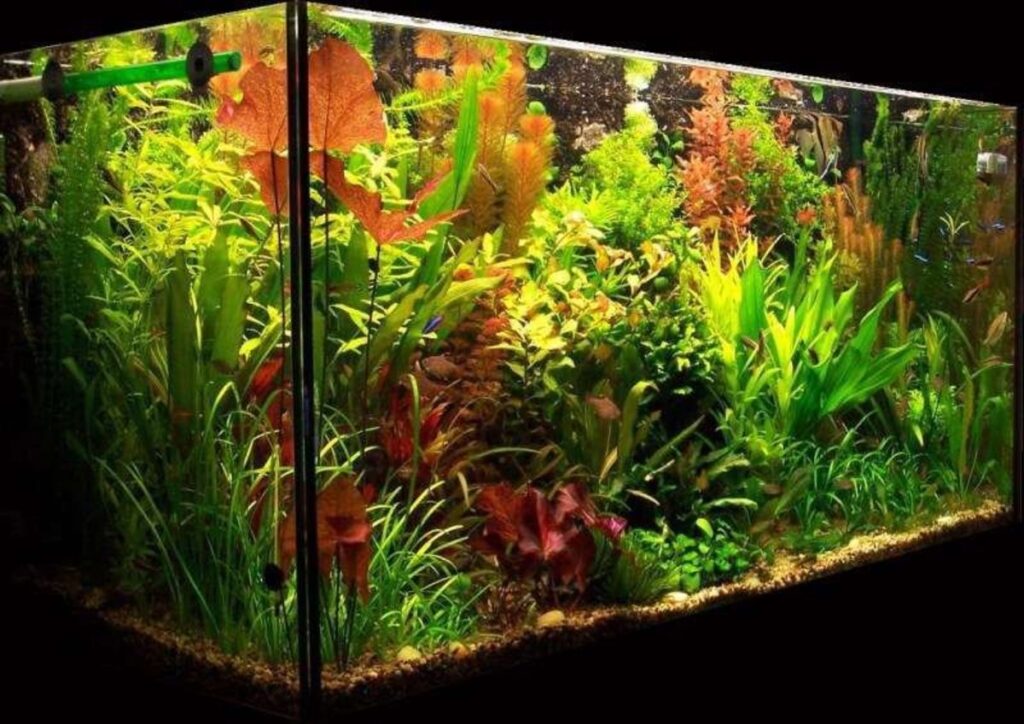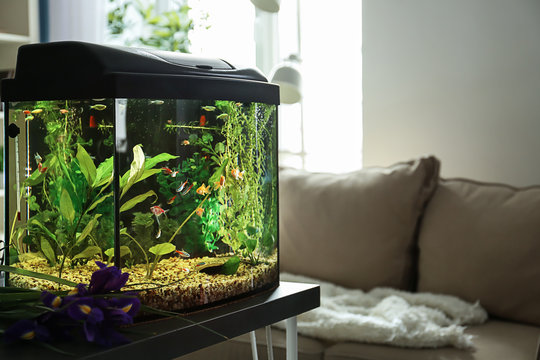If you’re looking to add some life and tranquility to your home, consider setting up an aquarium. Not only are aquariums beautiful and calming to look at, but they also provide a sense of responsibility and satisfaction in caring for aquatic life.
Setting up an aquarium can seem intimidating at first, but it’s actually quite simple once you know the basics. Here are some tips to get you started.
Choosing Your Aquarium
The first step is choosing the right aquarium for your space. Consider the size and shape of the tank, as well as where you plan to place it. A smaller tank may fit better on a desk or countertop, while a larger tank could be a statement piece in your living room.
When it comes to shape, there are a variety of options to choose from. Traditional rectangular tanks are popular for their simple and classic look, but bowfront or hexagonal tanks can add some visual interest.
You’ll also need to decide between a freshwater or saltwater aquarium. Freshwater aquariums are typically easier to maintain and less expensive, but saltwater aquariums offer a wider range of colorful fish and coral.
Equipment and Supplies
Once you’ve chosen your tank, you’ll need to gather the necessary equipment and supplies. This includes a filter, heater, lighting, and substrate (the material at the bottom of the tank).
Filters are essential for keeping the water clean and removing waste from the tank. A heater is necessary to maintain a consistent water temperature, as many aquatic species are sensitive to temperature changes. Lighting is important for both the health of your aquatic plants and the visibility of your fish.
When it comes to substrate, there are many options to choose from. Gravel is a popular choice for its affordability and ease of cleaning, while sand can create a more natural look for your tank. Some aquarists even use live plants as their substrate.
Choosing Your Fish and Plants

Once you’ve set up your aquarium, it’s time to choose your fish and plants. When selecting fish, it’s important to consider the size of your tank and the compatibility of different species. Some fish may be aggressive towards others, while some may require a specific water temperature or pH level.
Similarly, aquatic plants require specific conditions to thrive. Some plants require high lighting levels or a specific type of substrate, while others may release toxins that can harm your fish.
It’s important to research the requirements of your chosen species before adding them to your tank, as well as to ensure that they are ethically sourced and obtained from reputable suppliers. Click the link and buy your own a freshwater pom pom crab.
Maintaining Your Aquarium
Maintaining your aquarium is essential to keeping your fish and plants healthy. This includes regular water changes, cleaning the tank and filter, and monitoring the water quality.
Regular water changes are necessary to remove excess waste and ensure that the water parameters remain stable. Depending on the size of your tank, you may need to change 10-20% of the water every one to two weeks.
Cleaning the tank and filter is important to prevent the buildup of harmful bacteria and algae. This can include wiping down the glass, removing debris from the substrate, and replacing filter media as needed.
Monitoring the water quality involves regularly testing the pH, ammonia, nitrite, and nitrate levels in the water. These parameters can fluctuate over time, and it’s important to maintain a stable environment for your aquatic life.
Benefits of Home Aquariums
In addition to being a beautiful addition to your home, home aquariums offer several benefits for your mental health and well-being. Studies have shown that observing fish can reduce stress levels and lower blood pressure, while the act of caring for aquatic life can provide a sense of purpose and satisfaction.

